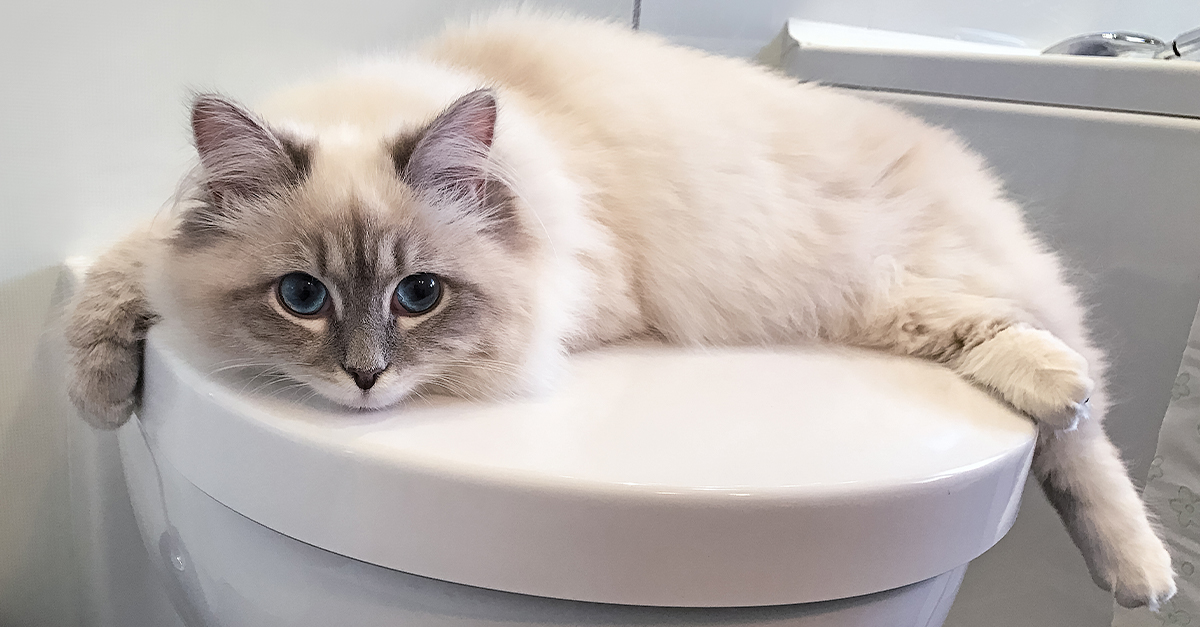Potential Issues of Flushing Cat Poop Down Your Toilet - Safeguard Your Plumbing
Potential Issues of Flushing Cat Poop Down Your Toilet - Safeguard Your Plumbing
Blog Article
Do you find yourself interested in critical information about Don’t flush cat feces down the toilet?

Intro
As feline proprietors, it's important to bear in mind just how we throw away our feline buddies' waste. While it may seem practical to purge cat poop down the toilet, this technique can have detrimental effects for both the setting and human wellness.
Ecological Impact
Flushing cat poop presents harmful pathogens and bloodsuckers right into the water system, posturing a significant risk to marine ecosystems. These contaminants can adversely influence aquatic life and compromise water quality.
Health Risks
In addition to ecological issues, purging feline waste can also present health risks to people. Pet cat feces may consist of Toxoplasma gondii, a bloodsucker that can create toxoplasmosis-- a possibly serious illness, specifically for expecting ladies and people with weakened immune systems.
Alternatives to Flushing
Thankfully, there are safer and more liable methods to throw away feline poop. Consider the adhering to choices:
1. Scoop and Dispose in Trash
The most common method of getting rid of feline poop is to scoop it into an eco-friendly bag and toss it in the garbage. Make sure to use a devoted trash scoop and dispose of the waste quickly.
2. Use Biodegradable Litter
Select naturally degradable pet cat trash made from materials such as corn or wheat. These litters are environmentally friendly and can be securely taken care of in the garbage.
3. Hide in the Yard
If you have a backyard, think about burying pet cat waste in a marked area far from vegetable yards and water sources. Make certain to dig deep enough to avoid contamination of groundwater.
4. Mount a Pet Waste Disposal System
Invest in a pet dog garbage disposal system especially developed for pet cat waste. These systems use enzymes to break down the waste, minimizing odor and environmental effect.
Final thought
Liable family pet ownership expands beyond providing food and shelter-- it also involves appropriate waste management. By refraining from purging feline poop down the bathroom and choosing alternate disposal techniques, we can lessen our ecological footprint and safeguard human health and wellness.
Why Can’t I Flush Cat Poop?
It Spreads a Parasite
Cats are frequently infected with a parasite called toxoplasma gondii. The parasite causes an infection called toxoplasmosis. It is usually harmless to cats. The parasite only uses cat poop as a host for its eggs. Otherwise, the cat’s immune system usually keeps the infection at low enough levels to maintain its own health. But it does not stop the develop of eggs. These eggs are tiny and surprisingly tough. They may survive for a year before they begin to grow. But that’s the problem.
Our wastewater system is not designed to deal with toxoplasmosis eggs. Instead, most eggs will flush from your toilet into sewers and wastewater management plants. After the sewage is treated for many other harmful things in it, it is typically released into local rivers, lakes, or oceans. Here, the toxoplasmosis eggs can find new hosts, including starfish, crabs, otters, and many other wildlife. For many, this is a significant risk to their health. Toxoplasmosis can also end up infecting water sources that are important for agriculture, which means our deer, pigs, and sheep can get infected too.
Is There Risk to Humans?
There can be a risk to human life from flushing cat poop down the toilet. If you do so, the parasites from your cat’s poop can end up in shellfish, game animals, or livestock. If this meat is then served raw or undercooked, the people who eat it can get sick.
In fact, according to the CDC, 40 million people in the United States are infected with toxoplasma gondii. They get it from exposure to infected seafood, or from some kind of cat poop contamination, like drinking from a stream that is contaminated or touching anything that has come into contact with cat poop. That includes just cleaning a cat litter box.
Most people who get infected with these parasites will not develop any symptoms. However, for pregnant women or for those with compromised immune systems, the parasite can cause severe health problems.
How to Handle Cat Poop
The best way to handle cat poop is actually to clean the box more often. The eggs that the parasite sheds will not become active until one to five days after the cat poops. That means that if you clean daily, you’re much less likely to come into direct contact with infectious eggs.
That said, always dispose of cat poop in the garbage and not down the toilet. Wash your hands before and after you clean the litter box, and bring the bag of poop right outside to your garbage bins.
https://trenchlesssolutionsusa.com/why-cant-i-flush-cat-poop/

As an avid reader on Don’t flush cat feces down the toilet, I thought sharing that excerpt was really helpful. For those who appreciated our post please do not forget to pass it around. Many thanks for your time. Visit us again soon.
Additional Information Report this page